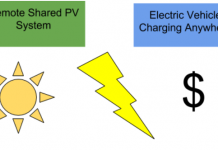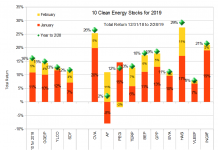Doug Young
 |
| BYD’s G3 at the Shenzen High -Tech Fair in 2009. BYD needs more exciting new products to thrive despite Chinese buyers spurning Japanese auto brands. Photo credit: Brücke-Osteuropa. |
The prognosis isn’t looking good for Japanese car brands in China, with Honda (Tokyo: 7267) becoming the latest predictor that the gloom plaguing Japan’s big 3 automakers could last into next spring and perhaps even longer. That looks like bad news for not only Honda, Toyota (Tokyo: 7203) and Nissan (Tokyo: 7201), but also their Chinese joint venture partners including Guangzhou Auto (HKEx: 2238) and Dongfeng Motor (HKEx: 489). Meantime, former high-flying car maker BYD (OTC:BYDDY, HKEx: 1211; Shenzhen: 002594) also continues to sputter for its own internal reasons, with the company predicting its profit will continue to plunge for the rest of the year to almost zero.
Both of these stories aren’t really new, as Japanese car makers have seen their sales drop sharply since a territorial dispute over a small island chain first flared between Beijing and Tokyo in September. Meantime, BYD’s woes date back even earlier, as the company’s sales have been plunging for much of the last 2 years due to weakness plaguing its car business. In an alarming sign, it looks like that weakness is also starting to infect BYD’s older and more stable battery unit as well.
Let’s look first at the latest news from Honda, which quotes the company saying its business in China may not return to normal levels until February next year. (English article) Honda, which operates China joint ventures with both Dongfeng and Guangzhou Auto, also said the sharp drop in its China sales will cause it to miss its full-year profit forecast by around 20 percent.
What’s most interesting to me in this latest gloomy report is the prediction that sales may not return to normal until February, as that indicates the Japanese automakers are expecting the current downturn to last longer than many people had expected. In fact, I think even February could be an optimistic prediction and the downturn could last well into the middle of next year, dealing a big blow to both the Japanese brands and their Chinese partners.
Many Chinese may soon resume buying most Japanese products at more normal levels by the end of the year as negative sentiment from this diplomatic crisis starts to fade. But cars are likely to suffer for a longer period due to the lingering images many Chinese consumers have of Japanese brand cars being burned and their owners beaten by angry crowds. Such fears are likely to linger for a while, as many consumers could easily opt to buy a US or European brand car over a Japanese one due to fears that they or their car could become a victim of angry mobs if tensions ever flare again.
Meanwhile, let’s look briefly at BYD’s latest results that show the woes continue unabated at this former high-flyer backed by billionaire investor Warren Buffett. BYD’s profits slid 94 percent in the third quarter to less than $1 million, and the company forecast its profit for the full year would fall by an even bigger 98 percent. (results announcement; English article)
The company loves to talk about the big potential for its newer electric car business, which it sees as its big future growth engine and presumably was a big factor in Buffett’s original decision to buy 10 percent of BYD. But the reality is that its core car business is hurting due to lack of exciting new products, and its battery business is now also starting to feel the pains of a slowdown.
I was somewhat amused by one report that said the company expects to return to profit growth in 2013, since it’s quite easy to show growth after your profits have shriveled to almost nothing. Then again, I wouldn’t completely believe the forecast for return to growth, as BYD could easily slip into the loss column as its prolonged winter continues.
Bottom line: Japanese car brands and BYD are both on the cusps of prolonged winters, as the former group battles negative consumer sentiment and the latter deals with declining businesses.
Doug Young has lived and worked in China for 15 years, much of that as a journalist for Reuters, writing about publicly listed Chinese companies. He currently lives in Shanghai where he teaches financial journalism at a leading local university. He also writes daily on his blog, Young’s China Business Blog, commenting on the latest developments at Chinese companies listed in the US, China and Hong Kong. He is also the author of an upcoming book about the media in China, The Party Line: How The Media Dictates Public Opinion in Modern China.








